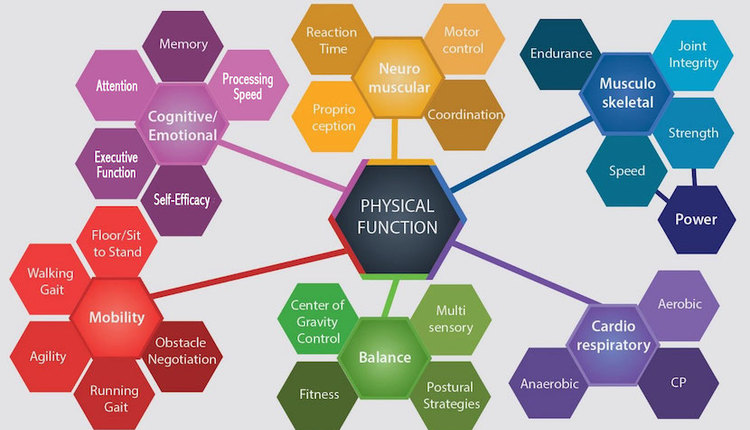Americans are enjoying physical activity in record numbers, and it's no surprise that physical injuries are on the rise as well. Lower extremity injuries, including those to the hip, knee, foot and ankle, impact the type and/or intensity of the workouts a client can perform. Specific injuries, such as torn knee cartilage, bursitis in the hip, ankle sprain or plantar fasciitis, will either mean no weight bearing activities for awhile or affect how much, or what kind of activity, the individual can perform. In addition to the strength training and flexibility exercises necessary to rehabilitate from injury, it's important for clients to also maintain their cardiovascular conditioning.
When creating an exercise program for lower extremity injured clients, you should incorporate cross-training. The more varied the activities, the more likely the client will comply with the program; therefore, alternate strength and resistance training days with cardiovascular regimens. It is also important to always consider rest as part of the modified exercise program to allow the body to recover from activity and heal from injury.
Aquatic Activities
Though swimming requires no weight bearing, it does create beneficial resistance with movement against the water. Designating the number of laps and establishing a length of time to swim ensures proper aerobic development. Other alternatives include water aerobics or walking in the pool. This latter activity allows partial weight bearing while most of the body weight is still buoyed in the water.
Cycling
The stationary bike provides a workout with reduced stress on knees, feet and ankles. It is important, however, to get the right setup on the bike to make sure you are not adding stress to the knees, back or shoulders. Make sure the seat height allows for slight flexion at the knee (approximately a 10-degree bend) when the pedal is at its lowest point and that the handlebars are at a comfortable height so as not to put strain on the back.
If your client is up to the challenge, try the bike model with arm handles that can be pushed or pulled, either along with the pedals or by themselves. Anytime you incorporate the upper body in a workout, the stress on the cardiovascular system is increased. The horizontal posts extending out on both sides from the front wheel can support the foot of the injured leg, while still allowing the "good" leg and arms a workout.
Another option is the recumbent bike, which may be beneficial for those people with back problems who require additional support. This allows cardiovascular conditioning in a more comfortable seated position. If the client is demonstrating solid progress and has access to an outdoor bike, encourage him or her to "test their mettle" with modified rides, taking into consideration any hills or valleys, which require greater resistance and control.
Stairclimber
A client should be instructed to "climb" the stairclimber as they would a set of stairs. The work on the legs should be the lifting of the knee, not the pushing of the feet. The mechanics of the machine keep the foot pedal under the foot as it is lifted up to "climb," followed by the "rest phase" as gravity allows the pedal to drop with the weight of the foot downward toward the floor. Adjust resistance as appropriate.
Elliptical Machine
The elliptical machine reduces jarring to the knees and provides less weight bearing activity while developing cardiovascular fitness. While the client is now bearing full body weight, he or she is not landing with three to four times his or her weight, as with running, but is rather shifting weight from one side to the other. The client will produce a more natural, smooth gait, making for an easier transition to walking or running.
Treadmill
A treadmill provides a controlled workout as your clients transition back into their running or walking routines. By increasing their speed and treadmill incline, they will regain balance and their cardio fitness level while participating in full weight bearing activity.
Flexibility
Maintaining and regaining flexibility and range of motion at the joints is essential to full recovery from injury. Incorporate daily stretching exercises involving the major muscle groups and specific routines for the injured area. Make sure all stretches are done in slow and controlled movements with no bouncing.
Strength and Resistance Training
While sore knees, feet or ankles are healing from overuse injuries, it's important to strengthen the muscles around the joints to keep them strong and to prevent re-injury. Work closely with clients to establish strength training with modified weights and repetitions to build back tone and muscle. Use exercise bands or tubes to increase resistance as strength and range of motion increase over time. Exercise balls can help strengthen the core, which is essential in regaining full functional movement and protecting the body against re-injury. You may also offer the client a variation of light hand weights and work on variable resistance exercise machines.
Circuit Training
A variation, incorporating strength training and cardiovascular development, with circuit training can be a valuable option in developing a modified program. Performing a specific resistance training exercise in an established sequence, going from station to station, keeps the heart rate elevated while working on specific muscle conditioning.
Balance Training
It is important to spend time on proprioception to re-establish neuromuscular patterns previously compromised by injury. Balance exercises are an excellent way to accomplish this and can include work with balance boards and Bosu balls. Balance also assists in core muscle development. Also consider yoga, Pilates and even Tai Chi as a part of your client's flexibility, strength and balance regimen.
Whether your client is training for the Boston Marathon or just starting to walk around the block, an injury to the lower extremity can mean quite a setback. In order to keep clients working toward their fitness goals, the athletic trainer can offer alternate exercise programs that will help them return to full activity in a safe and efficient manner.
Debbie MacLean is an athletic trainer and manager of operations for Health Management of The Coca-Cola company. For more information, email her at dmaclean@na.ko.com.












